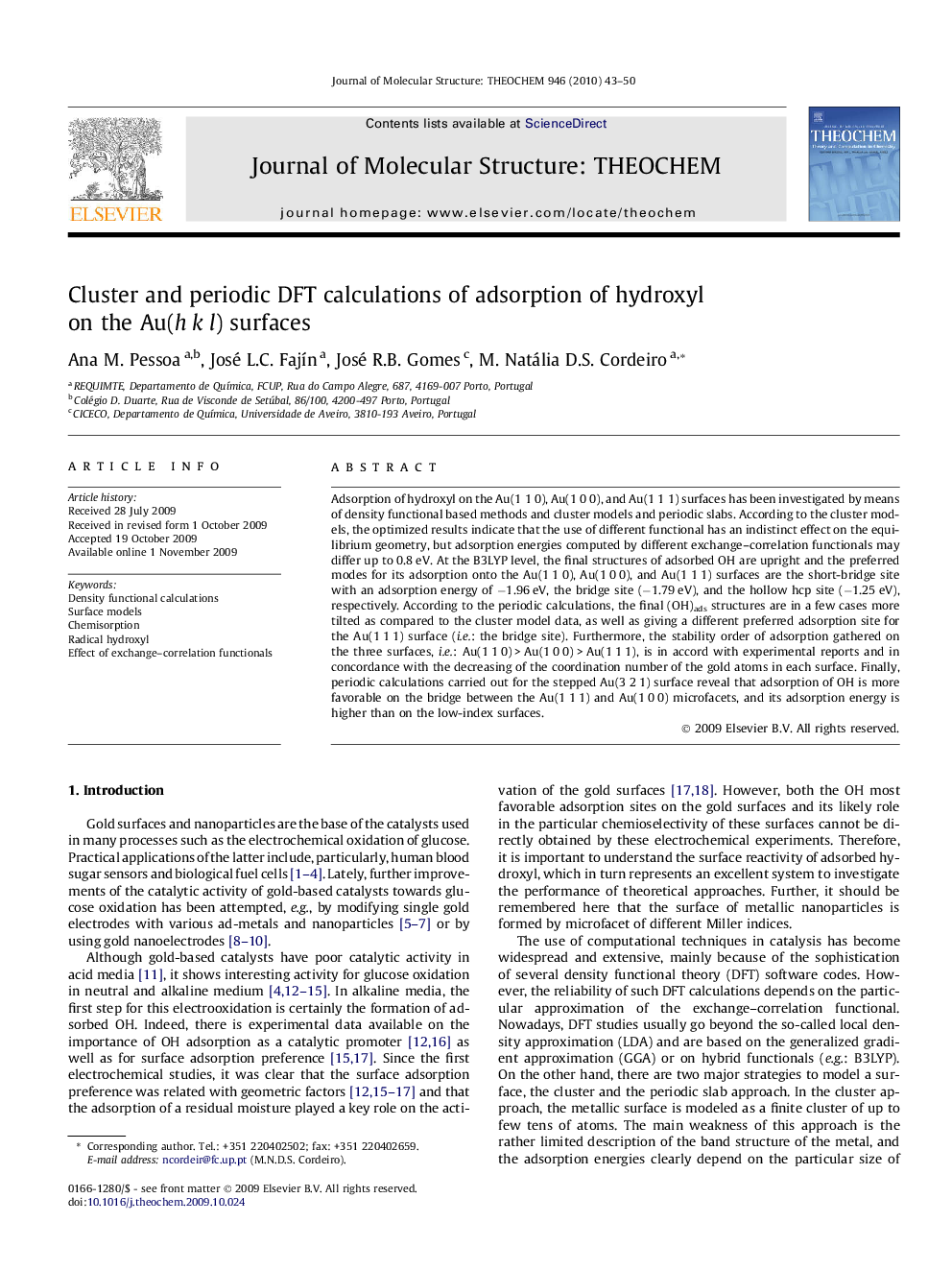| Article ID | Journal | Published Year | Pages | File Type |
|---|---|---|---|---|
| 5417033 | Journal of Molecular Structure: THEOCHEM | 2010 | 8 Pages |
Abstract
Adsorption of hydroxyl on the Au(1Â 1Â 0), Au(1Â 0Â 0), and Au(1Â 1Â 1) surfaces has been investigated by means of density functional based methods and cluster models and periodic slabs. According to the cluster models, the optimized results indicate that the use of different functional has an indistinct effect on the equilibrium geometry, but adsorption energies computed by different exchange-correlation functionals may differ up to 0.8Â eV. At the B3LYP level, the final structures of adsorbed OH are upright and the preferred modes for its adsorption onto the Au(1Â 1Â 0), Au(1Â 0Â 0), and Au(1Â 1Â 1) surfaces are the short-bridge site with an adsorption energy of â1.96Â eV, the bridge site (â1.79Â eV), and the hollow hcp site (â1.25Â eV), respectively. According to the periodic calculations, the final (OH)ads structures are in a few cases more tilted as compared to the cluster model data, as well as giving a different preferred adsorption site for the Au(1Â 1Â 1) surface (i.e.: the bridge site). Furthermore, the stability order of adsorption gathered on the three surfaces, i.e.: Au(1Â 1Â 0)Â >Â Au(1Â 0Â 0)Â >Â Au(1Â 1Â 1), is in accord with experimental reports and in concordance with the decreasing of the coordination number of the gold atoms in each surface. Finally, periodic calculations carried out for the stepped Au(3Â 2Â 1) surface reveal that adsorption of OH is more favorable on the bridge between the Au(1Â 1Â 1) and Au(1Â 0Â 0) microfacets, and its adsorption energy is higher than on the low-index surfaces.
Related Topics
Physical Sciences and Engineering
Chemistry
Physical and Theoretical Chemistry
Authors
Ana M. Pessoa, José L.C. FajÃn, José R.B. Gomes, M. Natália D.S. Cordeiro,
